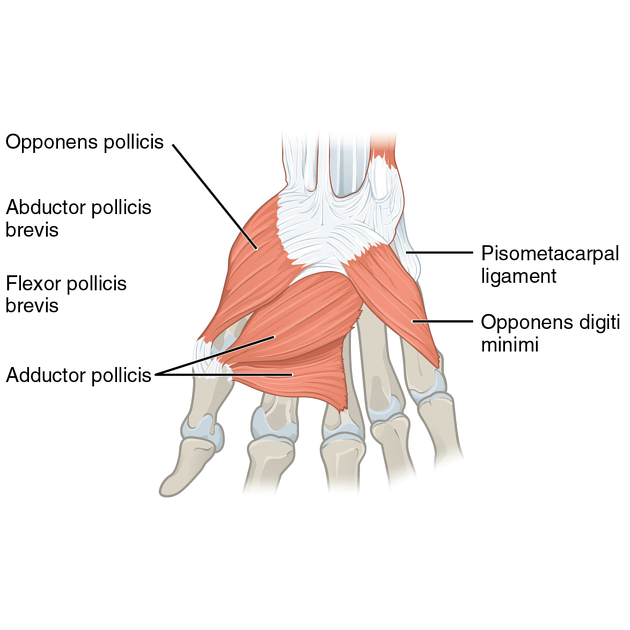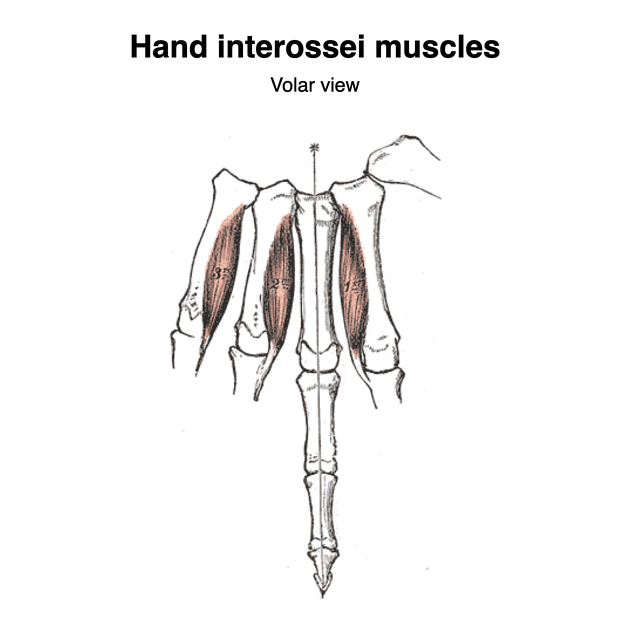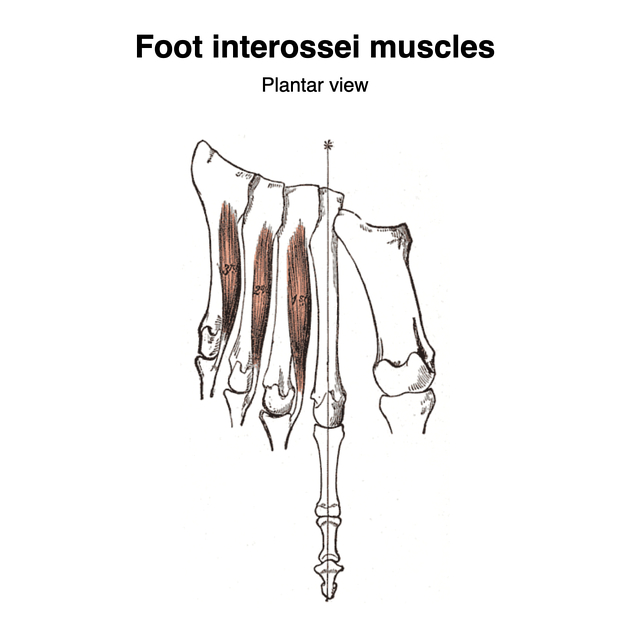Palmar interossei muscles (hand)



The interossei muscles, form part of the intrinsic muscles of the hand, and as a group consist of four palmar (1 is often rudimentary) and four dorsal muscles. Collectively the interossei contribute to abduction and adduction of the fingers and also contribute to flexion of the metacarpophalangeal joints (MCPJ) and extension of the interphalangeal joints (IPJ) through their insertion to the extensor hood. The reference axis through which abduction and adduction occur is the long axis of the 3 phalanx (middle finger).
Summary
- origin: palmar surface of 2, 4 and 5metacarpal bones
- insertion: extensor hood and the base of the proximal phalanges of their related digits
- 1: (often rudimentary) base of proximal phalanx of thumb and extensor hood
- 2: medial side of extensor hood of index finger
- 3 and 4: lateral side of ring and little fingers extensor hood and proximal phalanges, respectively
- innervation: deep branch of the ulnar nerve (C8, T1)
- action
- primary: adduction of thumb, Index, ring and little fingers at the MCPJ joints; NB: the middle finger cannot adduct
- secondary: contribute to the flexion of MCPJ and extension of the proximal interphalangeal joint and distal interphalangeal joint
Gross anatomy
The palmar interossei muscles of the hand are unipennate and more volar in relation to the dorsal interossei. There are four muscles in this group, however, the 1 is rudimentary and often considered part of either the adductor pollicis or the flexor pollicis brevis . They adduct the thumb, index, ring and little fingers along the long axis of the middle finger. Just like the dorsal interossei, the tendons pass deep to the transverse metacarpal ligament.
There is no palmar interosseous muscle for the third digit as it cannot be adducted towards itself.
Relations
The first palmar interosseous lies anterior to the first dorsal interosseous. The adductor pollicis crosses anterior to both the heads of the first and second palmar interossei. The flexor tendons of flexor digitorum superficialis and profundus similarly overlap the third and fourth palmar interossei.
Blood supply
Palmar interossei are largely supplied by branches from the deep palmar arch, princeps pollicis and palmar metacarpal arteries.
Clinical pearls
The mnemonic “PAD” and “DAB” can be used to help remember the different functions of the two muscle groups.
- Palmar = ADduction
- Dorsal = ABduction
Clinical testing
The patient lies their palm flat on a table and tries to hold a piece of paper in between their second and third digits. The examiner attempts to pull that piece of paper away to assess the strength of adduction and ensure the ulnar nerve is intact.
Siehe auch:
und weiter:

 Assoziationen und Differentialdiagnosen zu Musculi interossei palmares:
Assoziationen und Differentialdiagnosen zu Musculi interossei palmares:

